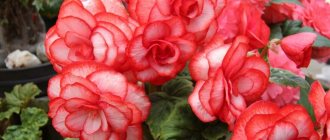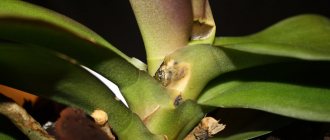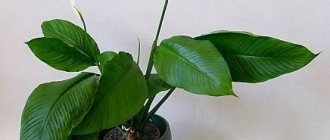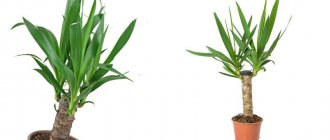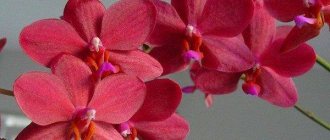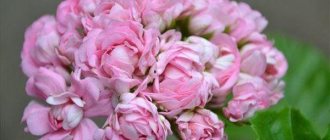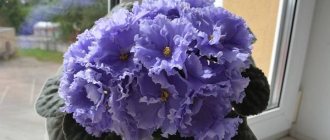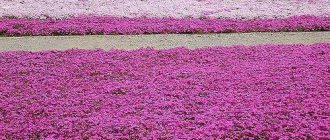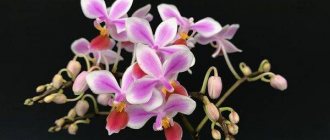Orange (Cītrus × sinēnsis) is a fruit tree, a species of the Citrus genus of the Rutaceae , which began to be cultivated around 4000 BC. in Southeast Asia.
Few people know that the orange is a hybrid, possibly of a tangerine (Citrus reticulata) and a pomelo (Citrus maxima).
It is interesting that orange is mentioned in chronicles earlier than other citrus plants. The earliest cultivation of this tree began in China (220 BC), later in Egypt, North Africa and the Mediterranean countries. The first Europeans to try orange were Alexander the Great and his soldiers; it had a special taste; it was sour. A truly delicious sweet orange was brought to Europe only in the 15th century by the Portuguese crusaders from Palestine, so at first the orange was even nicknamed “Portuguese fruit.” Orange gained great popularity among the European nobility, and at first it was grown only in tubs in the gardens of aristocrats, and for the winter, tubs with these precious trees were moved to special greenhouses. Noble nobles liked to have picnics in such gardens, receive guests and take walks. French cooks during the Renaissance even knew a recipe for how to candy orange fruits directly on the branches, so that strolling guests could pick and immediately eat the ready-made candied fruits.
The orange was brought to America by Christopher Columbus in 1492, during his second voyage, and of course, it immediately appealed to the Indians, who helped spread the orange throughout the continent.
White orange flowers are a symbol of purity, so they traditionally decorate the bride's wreath in many countries even today.
The indoor orange reaches a height of about 2 meters, it is whimsical and requires special care, but if you get the hang of it, it does not cause much trouble.
Botanical description
The bitter orange tree (bigaradia, Latin: Citrus aurantium) is an evergreen plant belonging to the genus Citrus of the Rutaceae family (Latin: Rutaceae). It originates from the Eastern Himalayas, but its classic wild varieties are unknown. According to scientists, bitter orange was cultivated in China 4 thousand years ago.
At 10 tbsp. the trees were brought by Arab and Portuguese sailors to the Middle East, from where they spread throughout the Mediterranean. They are also cultivated in Central America.
Bitter orange is a tree reaching a height of 10 m, decorated with green elongated leaves and white fragrant flowers, which are arranged singly or in bunches of 5-10 pieces. As you can see in the photo, the orange flower is snow-white, consisting of a five-part, slightly opening perianth and thick segments, inside of which there are many stamens.
The fruits are round in shape with a thick, rough skin and become orange-red when ripe. The pulp of the fruit is bitter and sour and is not eaten in its pure form, but is successfully used for making seasonings, liqueurs and marmalade. Its tasty variety (sweet orange) was developed only in the 16th century.
The French name for the orange flower is orange blossom (Fleur d'orange). It gives the plant charm and glamor. The flowers have a characteristic sweetish aroma. Some experts compare the fragrance of such flowers with jasmine, but enhanced by honey and more tart shades. Others associate the aroma of orange blossom with notes of rubber and indole.
Orange fruiting
The fruit blooms and bears fruit all year round. This is a remontant plant; the tree simultaneously contains flowers and fruits of varying degrees of maturity. Citrus fruits ripen mainly in late autumn. The main fruit harvesting season begins in December and ends in February, but ripe fruits hang on the branches for about a year. Old fruits are used to collect seeds.
Flower
The orange bisexual flower has a diameter of about 5 cm. The structure of the flowers is simple, they consist of 5 elongated oval petals, white, less often with a reddish tint. The pistil is long, located strictly in the center, surrounded by a dozen stamens.
The flowers are parallel to the branch, sometimes bending down. They are collected in cluster-shaped inflorescences of 6 pieces. Flowering begins in March or early April. The bud stage lasts about a month. Flowers open at an air temperature of 16°C-18⁰C. The flowering period is short - 2-3 days. Cross pollination. Some varieties are self-pollinating. There are species without pistils, they bear fruit without pollination and reproduce without seeds.
orange fruit
The orange fruit is called "hesperidium" or "orange". It looks like a berry and has 10-12 segments. They are separated from each other by thin skin. Each small orange slice consists of oblong sacs filled with juice. They are plant cells with swollen vacuoles. Closer to the center, in the thickness of the pulp, there are 1-2 beige seeds with several embryos. There are also seedless varieties; their fruits are formed parthenocapically, without pollination. A slice of such an orange is completely filled with juice sacs.
The top of the orange fruit is covered with a peel, the thickness of which sometimes reaches 5 mm. The skin of the fruit consists of several layers. The top one is called zest. The color of the orange skin is orange, yellow-orange or red-orange. The bottom layer is white, loose, called “albedo” and is directly adjacent to the pulp. The peel is relatively easy to peel even by hand. For convenience, make a longitudinal or transverse cut with a sharp knife, then the skin can be removed without much effort.
Essential oil
Processing orange blossom flowers gained popularity during the Renaissance. Even then, the method of steam distillation was invented, with the help of which they learned to obtain essential oil from orange flowers. It is called “neroli” and is a colorless liquid that emits a light floral aroma with hints of bitterness.
Neroli oil has a complex composition, the main components of which are inalyl acetate, linalool, geranyl acetate, nerolidol, farnesol, terpineol, nerol, pinene and sabinene. When processing flowers, the final yield is up to 0.12% of their mass.
Companies producing orange flower oil are located in the southern regions of Italy, France, Spain (Europe) and African countries (Tunisia, Algeria, Morocco). One of the popular and best varieties is obtained in Nabeul (Tunisia). The amount of neroli oil produced annually amounts to tons, but its volume greatly depends on the timing of frost.
The aroma of neroli is very different from the smell of orange flowers. To bring it closer to the original, some manufacturers use extraction methods using ether. With this processing, a concrete is obtained, which, after repeated extraction with ethanol, is converted into an absolute. The output (0.1% by weight) is a dark red liquid with a strong, rich aroma of orange flowers.
Neroli: benefits and emotional effect
Essential oil obtained from orange flowers has been successfully used in medicine for several centuries. Previously, only very wealthy people could use it, but the modern perfume industry often uses artificial scent enhancers. Therefore, when the name “orange blossom” is indicated on the label, this can mean not only natural oil, but also other substances and products that are obtained after processing orange flowers, as well as their substitutes.
Neroli oil helps eliminate insomnia, depression, and relieve feelings of fear and anxiety. Orange blossom is a good antidepressant that gives women joy and peace. The oil is a sedative that helps reduce feelings of panic, melancholy or fear, stabilizes the mental state and harmonizes the general condition, and is considered a strong aphrodisiac (euphoric and hypnotic effect).
Neroli has a general strengthening effect on the immune system and has an antiviral effect. In Italian history, it is known that the citizens of Venice used orange oil to treat not only depression, but even a terrible infectious disease - the black plague.
Using essential oil and combining it with others
In the cosmetic industry, neroli is used for therapeutic massage and skin treatment: it helps reduce stretch marks, smooth out wrinkles, remove acne and promotes rejuvenation.
Recipes and recommendations for using orange flower essential oil:
- for massage use 5-7 drops per 10 g of base oil - has a relaxing effect;
- use in an aroma lamp (4 drops per 15 m2 of room area) - helps create a calming atmosphere in the house;
- relaxing bath - 3-7 drops;
- for aroma medallion you need 2-3 drops.
Neroli goes well with other essential oils: bergamot, mint, frankincense, sandalwood, marjoram, jasmine, mandarin, sage, ginger, eucalyptus, lavender, verbena, myrrh, etc.
Reproduction methods
Cuttings
An important advantage of the method is the preservation of varietal characteristics. To obtain cuttings, use branches from this and last year that are covered with bark. Using a sharp knife, cut a cutting 8-10 cm long with 5 leaves immediately below the bud at the bottom and 5 mm above the bud at the top. Remove the leaf from the bottom bud. Plant the finished cuttings in a mini-greenhouse in sandy soil. Place the greenhouse in a bright place without direct sunlight and keep the soil slightly moist. After about a month, the rooted cuttings can be transplanted into an individual pot. Do this carefully so as not to damage the delicate roots.
Planting seeds
Even a novice gardener can use this method. Plants grown from seeds are less demanding of care, grow quickly, but begin to bear fruit only at 8-15 years of age. Be aware that such a tree may not borrow the varietal characteristics of the parent. Use seeds for planting from indoor oranges. Store-bought fruit seeds are not suitable for growing indoors.
The seeds must be fresh, that is, just taken out. They need to be planted in a mixture of humus and sand to a depth of 1 cm. Cover the container with film and place in a dark place. With moderate watering, the first shoots will appear in about a month. When the first two leaves grow, transplant the sprout into a pot.
Graft
It allows you to get a faster harvest, so the scion should be taken from a fruit-bearing tree. The disadvantage of this method is that it can only be used during the period of active sap flow. Use a razor-sharp knife to cut the cuttings. You can graft onto a lemon or orange tree that is 2-3 years old. Cut off its crown at a height of 10 cm from the ground. Split the trunk into two halves and insert the cutting with oblique cuts. Choose a scion with 3 buds. Align the two branches and wrap the grafting site with film. To retain moisture, cover the plant with film and place it in a bright place. After about 3 weeks it will be clear whether the cutting has taken root or not. If it doesn't turn black, then everything worked out.
Many housewives are faced with yellowing of foliage. Sometimes an orange can shed its crown completely. Watch the tree. Perhaps you overdid it with watering or fertilizing. Either your orange does not have enough light or is in a draft.
Preparation of orange water and its uses
Another way to obtain orange blossom products is extraction with supercritical CO2 gas (carbonic acid). After distillation, the resulting hydrolate is orange blossom water. It includes aromatic substances obtained by extraction using petroleum ether. The final product is an absolute in the form of a brown liquid containing 16% methyl anthranilate and having an intense orange aroma.
Orange flower water was widely used in cooking in Arab and French cuisines for preparing drinks and dishes. It is included in the ingredients of delicious lemonades, tea, and is added to baked goods and meat dishes.
How oranges are grown and plant propagation
Caring for an orange tree grown in the house is the same as for other citrus fruits, and requires care and constant care: watering, spraying, loosening, fertilizing with mineral and organic fertilizers.
It is necessary to pinch young orange shoots, trim old branches, and remove long thin shoots that dry out in winter. The main fruiting of oranges occurs on the shoots of the current year and on last year's shoots. In grafted plants, fruiting usually occurs at 4–5 years of age, but with good care and additional lighting in winter, much earlier. But we must keep in mind that with a sudden change in lighting, the orange may shed its leaves. The orange tree also categorically does not tolerate tobacco smoke.
Orange is a moisture-loving plant and requires abundant watering, and always with soft water. From April to October, abundant watering. During the dormant period, watering becomes more economical, but nevertheless, the earthen clod should not be allowed to dry out. Less water is needed in winter, but the substrate should always be slightly moist.
Twice a month the orange is fed with fertilizers (nitrogen, phosphorus, potassium). At a young age, the plant should be replanted annually, and from 5 years old - once every 2-3 years.
Of all the insects that attack oranges, scale insects and the citrus red mite cause the most trouble. If the plant's growing conditions do not meet the necessary conditions, there is a high risk of developing spotting and sooty fungus.
Cuttings using phytohormones and bottom heating. It propagates very well by grafting onto bigaradia seedlings. Orange propagation is carried out mainly by grafting onto seedlings or by air layering, since cuttings take root with difficulty, and in some varieties they do not take root at all. Poncirus trifoliata cannot be used as an orange rootstock, since due to its biological characteristics it is completely unsuitable for indoor cultivation of citrus fruits.
Hydrolate and flower extract
The orange blossom hydrolate currently sold has a natural composition and can be used in cooking and cosmetology. Its main beneficial property used in cosmetics is the ability to regenerate skin cells, providing a restorative, refreshing and tonic effect. When applied to the surface of the skin, it gently lightens and increases shine. Hydrolate helps the formation of collagen, which helps smooth out wrinkles and increase the elasticity and firmness of the epidermis.
Orange flower extract is also used for medicinal purposes, which has a bactericidal and anti-inflammatory effect. It is used to alleviate well-being in diseases of the upper respiratory tract and strengthen the immune system. The extract has a positive effect on normalizing hormonal disorders and has a calming effect. It is added to cosmetic products (cream, serum with a lifting effect, etc.) used for all skin types in order to normalize sebum production. The extract is used in the fight against cellulite, because... has a beneficial effect on the epidermis and helps regenerate faded, aging and sagging skin.
Application in the perfume industry
Neroli oil is widely used in the production of luxury perfumes. A pleasant aroma with a fruity accent perfectly emphasizes the compositions used to make perfumes.
Orange flower (orange blossom) is present in the following women's and men's perfumes:
- Givenchy Amarige (1991) - symbolizes beauty, femininity and nobility, has a rich trailing aroma of a floral composition (mimosa, orange blossom, black currant, rosewood, tuberose, vanilla, sandalwood and other notes).
- Lancome Poeme (1995) - combines several contrasting feminine scents: frosty freshness (representing the blue poppy from the Himalayas) and the warmth of sand dunes, consisting of the scents of orange, bell and mimosa on a vanillin “base”.
- Viktor & Rolf Flowerbomb (2011) - refers to oriental fragrances, main heart notes: neroli, orchid, jasmine, freesia and rose, suitable for young people and middle-aged women.
- Christian Dior Pure Poison (2004) - the creators of this perfume (famous designers C. Biname, D. Ropillon and O. Polge) received a surprisingly clean and noble scent with notes of orange, jasmine, amber, gardenia and sandalwood, the aroma has a teasing and passionate appeal , suitable for a date.
- Prada Infusion de Fleur d'Oranger (2008) has a scent associated with a walk on the beach on a summer day, transporting its owner to forgotten bright moments of childhood; the composition is composed of orange blossom, neroli oil, jasmine, mandarin and tuberose.
- The One For Men Platinum (2013) by the Dolce & Gabbana brand is a men's perfume that has a solemn, enchanting and sultry aroma (orange flowers, cardamom, ginger, basil, etc.).
Nutritional value of orange petals
In the last decade, the use of orange tree flowers in cooking as a food product has become increasingly popular. The taste of orange blossom is delicate, slightly tart, and is associated with eating the peel of this fruit. Only freshly cut flowers can be eaten (no more than 24 hours after cutting), without signs of pests or plant diseases. This makes it difficult to use them in the climatic conditions of Russia, however, many amateur flower growers grow orange trees at home.
The calorie content of this product is 0 kcal/100 g, so it is recommended to include flowers in the diet menu. They will help diversify your diet and also contain many useful substances:
- essential oils that have a positive effect on metabolism and the digestion process, help eliminate toxins, improve the condition of hair and nails, support the functioning of the nervous and cardiovascular systems;
- vitamin C - is contained in smaller quantities compared to fruits, but its use affects the restoration process of cells and tissues, helps to improve the health of teeth, gums and improves bone strength, promotes the absorption of iron, improves immunity;
- rutin, or vitamin P, belongs to flavonoids - substances beneficial for the heart;
- phytoncides - have an active antibacterial effect, killing fungi, viruses and microbes;
- tannins - have a positive effect on the functioning of the gastrointestinal system and impart an astringent taste.
Orange flowers are contraindicated for use as a food product for children and pregnant women due to the possible manifestation of allergic reactions. They are also prohibited for patients with stomach ulcers or gastritis.
Orange flowers are most often used in the preparation of drinks and desserts. They can be eaten after being coated with sugar glaze or soaked in syrup and jam. Particularly popular in China is orange tea, which is prepared from fresh or dried flowers and brewed with green varieties. The recipe for the drink is quite simple: 1 tsp. large leaf green tea and 1 tbsp. l. Add orange petals to hot water (do not bring to a boil), leave for 5-7 minutes. The drink is consumed without sugar or with the addition of flower honey.
Where do oranges grow in Russia?
The subtropical plant was formed in a humid, warm climate, which determines its continuous vegetative growth. Hybrids of this species are heat-loving and occupy an intermediate place in terms of frost resistance among other citruses, at the same time they are quite heat-tolerant and can be successfully cultivated at temperatures up to +45 ° C.
Recent Entries
Lilac perennials that are beautiful, compact and do not crowd out other plants Why when buying seedlings you should not take the sellers’ word for it and how to determine the age of the plant using 3 signs Tomato seedlings have turned purple or whitish: why the color has changed and how to save the plants
Humidity, temperature and soil composition for the growing season and fruiting of oranges are ideal on the shores of the Mediterranean, in Egypt, Pakistan, and Turkey. This variety of citrus fruit is also cultivated in Algeria, Iran, USA, and Brazil. Climatic conditions in Sicily, India, Spain and Portugal make it possible to enjoy oranges and grow them for export.
Video: how oranges grow and bloom
In open ground conditions, moisture-demanding and light-loving oranges can be grown only in a limited area of the subtropical regions of our country. At the same time, ripe fruits remain on the branches for a long time, surviving frosts, by spring they become green again, and by autumn they turn yellow again.
In coastal Sochi
The first frost-resistant varieties appeared back in the 60s (for example, the Pervenets variety). The most famous varieties of the Krasnodar region:
- Sochinsky,
- Firstborn.
In the 21st century, in the selection of the Research Institute of Floriculture and Subtropical Crops of the city of Sochi, using Chinese and European plants, they were able to develop varietal orange hybrids that survive the winter without shelter and bear fruit well (for example, Washington Navel).
In Sochi, oranges also grow in open ground
Plants prepared for local climatic conditions are obtained using budding (a method of grafting fruit plants with a single bud with a thin layer of wood taken from a cultivar cutting). Vaccinations are done on poncirus bushes, a crop from the citrus genus. Such plants require shelter during sharp drops in temperature only in the first year of life. Many years of experience of Sochi gardeners confirms that it is possible to grow oranges in Sochi even in summer cottages in open ground. To do this, use the trench method:
- Seedlings of the first years are planted in trenches 1 m deep.
The trench growing method is also suitable for citrus fruits other than orange.
- When the first frost occurs, they are covered with glass frames on top.
- After the arrival of winter, young plants are covered with thick mats.
For 3-year-old and older oranges, the only danger is sharp frosts, which are quite likely in recent years. In this case, only young plants and only the ground part of the hybrid die.
This type of citrus fruit is grown without danger in greenhouses.
In hot Abkhazia
The climate of Abkhazia is perfect for growing many tropical fruits, including oranges. They do not require shelter for the winter, and sufficient humidity and stable hot weather contribute to the rapid and friendly ripening of fruits. Citrus fruits ripen here in January.
In winter, you especially want vitamins, and ripe oranges from Abkhazia will come in handy
The best varieties of oranges grown on the Black Sea coast of Abkhazia:
- Washington Navel,
- Firstborn,
- Gamlin,
- The best Sukhumi.
Bridal bouquet
At the beginning of the 18th century, in many European and Mediterranean countries, orange tree flowers began to be used to create bouquets that the bride holds during the wedding ceremony. A wreath of orange flowers has long been considered a symbol of a girl’s innocence and a guarantee of eternal youth. In Italy it is generally accepted that a bouquet of orange flowers is a symbol of a large and united family in the future. In English, this flower sounds like orange blossom, but the French name stuck due to its charm and glamor.
This tradition has become entrenched in the wedding ritual and remains popular in the 21st century, which is why the sale of wreaths for wedding ceremonies is popular among young people. For a complete set, the bride can also use perfume with an orange scent, for example, Wedding Bouquet from the English perfume house Floris, which was released specifically for the wedding ceremony of Prince William and Kate Middleton.
Possible problems in growing an orange tree
The orange tree is quite capricious. At the slightest violation of comfortable maintenance, the appearance of the crown will change. The orange may shed its buds or leaves. The leaves may also turn pale or begin to dry out around the edges. This can be a symptom of either improper watering and excessive sunlight, or a fungal infection. In addition, insect pests can cause irreparable harm to the plant.
Fungal disease can be removed by trimming the affected parts of the tree and then treating it with a disinfectant solution. Aphids, mealybugs, spider mites and other pests are destroyed with a solution of laundry soap or insecticides. The damaged root system must be treated with enhanced fertilizer with mineral and organic substances.
Even novice gardeners can grow an orange tree at home. It is enough to follow the instructions and in a few years you will be able to enjoy the sweet, juicy fruits of your own sprouted tree.
Fruit bouquet: production
Many companies also sell bouquets of oranges and flowers, intended specifically for a holiday or as a gift. However, you can easily make such a bouquet yourself.
To make a bouquet you will need oranges, flowers, a floral sponge (pioflor), a wicker basket, sticks for fastening and wire, fern leaves and any other flowers.
The sponge is placed in a basket, soaked with water. Oranges must be cut in half and sticks attached to them. Ferns and flowers (chrysanthemums, gerberas, daisies, etc.) are placed in a bouquet by sticking the stems into a sponge. Oranges are placed with the chopsticks down and the cut part up. The rest of the space is decorated with small flowers.
Such a bouquet, made up of fruits and flowers, is an excellent gift that can not only lift your spirits, but also provide health benefits by adding vitamins to the body.

